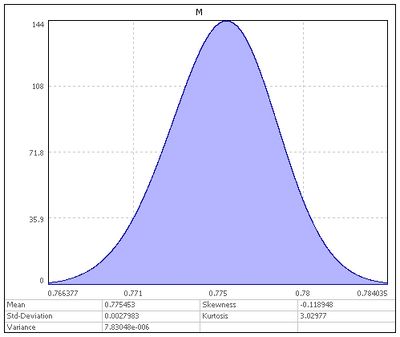Software: FEMM - Magnetostatics of a Brushless Motor
1. Nominal Optimization of a Brushless Motor with permanent magnet
Dr. Rimsha V.V., Dr. Radimov I.N., Tran T.T.H.
Odessa University of Technology, Ukraine
Smoothness of the rotor is a challenge for design of electromagnetic brushless motors. The main source of acoustic noise is the torque ripple. Oscillations of the torque can be caused by:
- Cogging torque effects
- Harmonics in the power absorbed by the back emf
- Reluctance torque components due to rotor anisotropy.
In permanent magnet (PM) motors, the cogging torque is caused by the interaction between the PM field and the stator slotting. So, to minimize acoustic noise, we need to optimize this interaction.There are many methods to reduce detrimental effect of cogging torque: stator or rotor skewing; additional notches in stator teeth and additional stator teeth [1]. In this work we explore design with additional stator teeth. This design is used by Lenze Company [2] and others. It has advantage over others: its magnetic flux 1,2 times greater magnetic flux of design which has no additional stator teeth; the additional teeth isolates stator windings.
-We have accepted design of Brushless motor which want to explore:
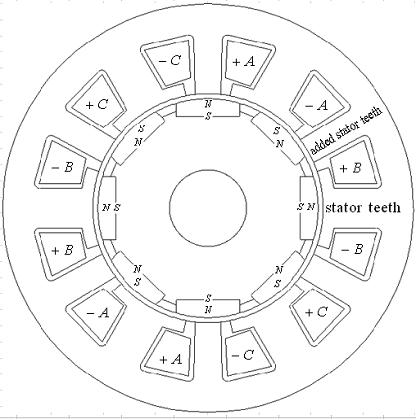
-For initial design fig.1 we have 4 variables: (fig. 2):
- alf-t_stator teeth-arc width
- alf-PM_pole-arc width
- alt-at_stator added teeth-arc width
- delta_air gap.
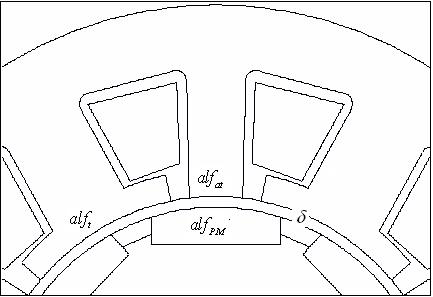
We use the simulation system FEMM modeling the brushless motor to calculate the cogging torque, which depends on the design parameters. The LUA script is used to write a script building the motor in FEMM. It consists of following steps:
- reading the parameters from the input file "input.txt", creating and meshing the motor geometry;
- turning the rotor at the start-position to the end-position in a period of cogging torque of rotor with a fixed step(fig.4)(For design in fig.1 we have: a period_15 degrees and fixed step_0.5 degree);
- computing the cogging torque of rotor for every position(fig. 3);
- getting the maximum value of cogging torque each period and writes to “output.txt” file.
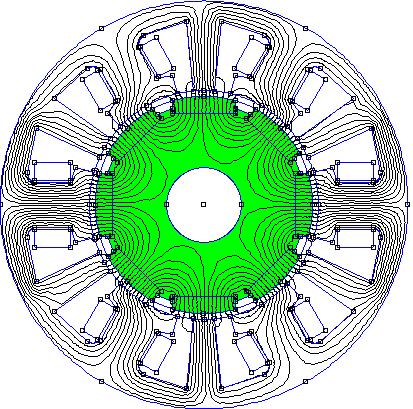
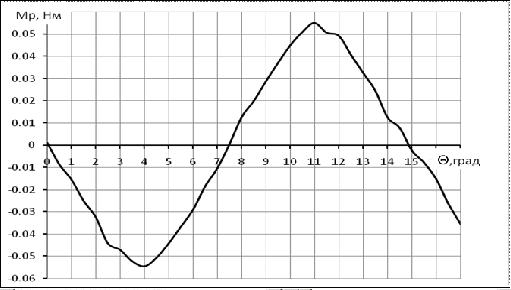
OptiY is used to improve the motor design. The objective function is the cogging torque of rotor being minimized. The constraint in our example is the arc-width of stator slot. Because of manufacturing technology, it must be greater then 4,5 degrees. The simulation system FEMM is integrated into OptiY by a process workflow (fig. 5):
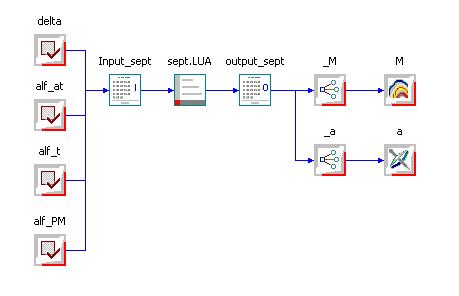
The design parameters and constraint are set for the optimization process (fig. 6).

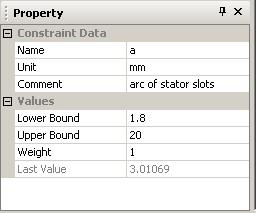
As optimization method, we use the evolutionary algorithms with 2 Parents and 7 Children: (2+7)-Evolutionary Algorithms. The optimal design is archived after 424 optimization steps or model calculations(fig.7)
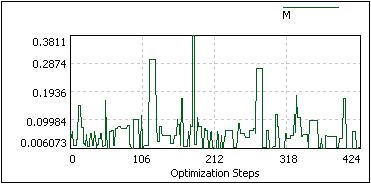
After optimization,we received the best geometry, parameters of which are listed in result table below
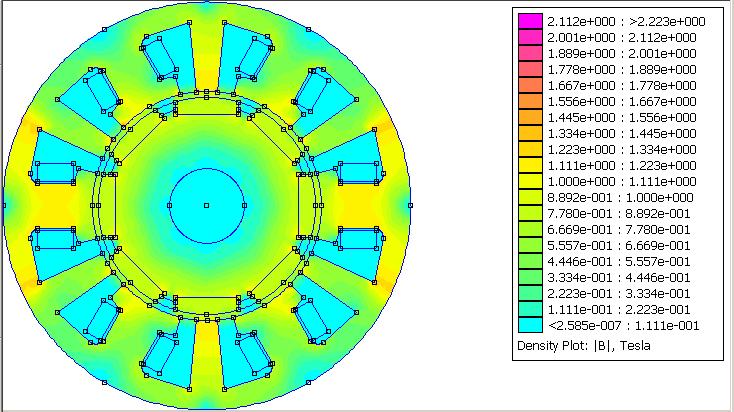
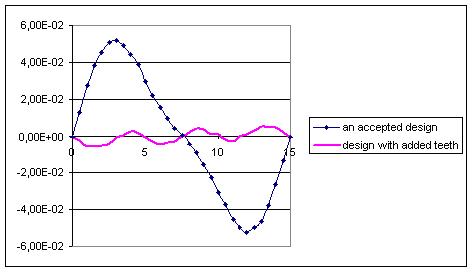
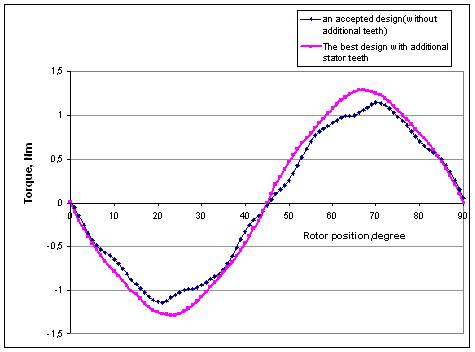
For the demonstration of design automation using numerical optimization, the time effort by OptiY and by manual setting of the parameters for simulation (by-hand) is compared:
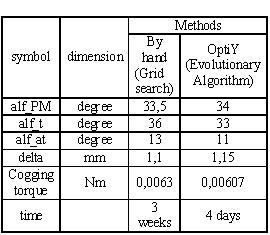
1.Bolognani S., Bianchi N., Malesani L., Zigliotto M., Cervaro S. //Brushless motor drives for ventilation // Department of Electrical Engineering, University of Padova, Italy, 2003.
2. http://www.lenze.com
3.J.R Hendershot Jr and Tje Miller//Design of brushless permanent magnet//Magna Physics Publishing And Clarendon Press.Oxford, 1994.
2. Multi-Objective Optimization
Dr. Rimsha V.V., Dr. Radimov I.N., Tran T.T.H.
Odessa University of Technology, Ukraine
Nominal Optimization is presented just for conception about optimization of PM motors. Because you can say:” I can reduce cogging torque just by increasing the air-gap”. That’s right! Our target that is optimal design, cogging torque which is smallest but electromagnetic torque is biggest. So, we need to use “Multi-Objective Optimization” in this case for an optimal design.
- We take the same constraint, initial design and 4 variables as in “Nominal Optimization” (alf-t_stator teeth-arc width; alf-PM_pole-arc width; alt-at_stator added teeth-arc width; delta_air gap)
- The LUA script is used to write a script building the motor in FEMM, too. His steps are very similar as in “Nominal Optimization”. It is added 2 steps: computing the electromagnetic torque of rotor for 45 positions when source current density equals 8 MA/m^2 and getting the maximum value of electromagnetic torque each period and writing to “output.txt” file.
- The objective functions are the cogging torque of rotor and the reciprocal of electromagnetic torque of rotor when current density equals 8 MA/m^2 being minimized.
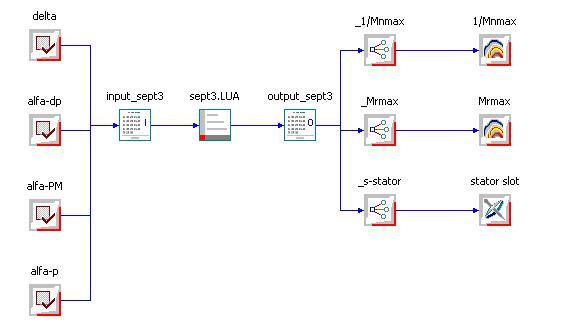
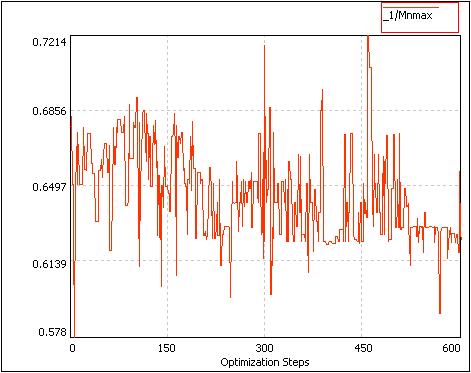
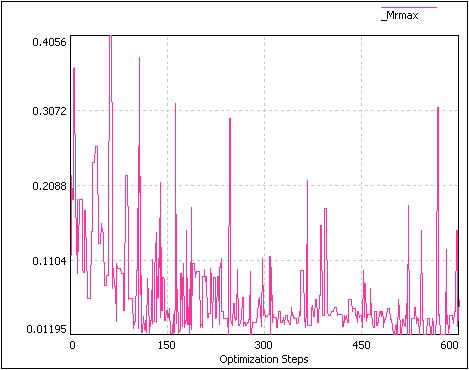
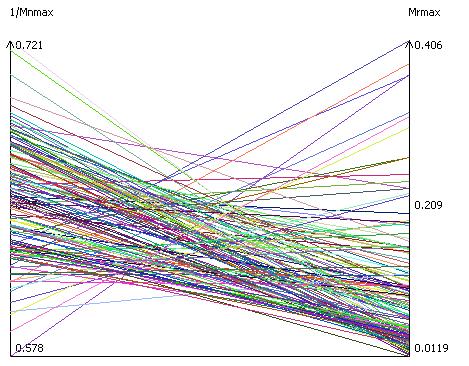
After receiving the optimal design, we have the rotor angular dependence of cogging torque and electromagnetic torque.
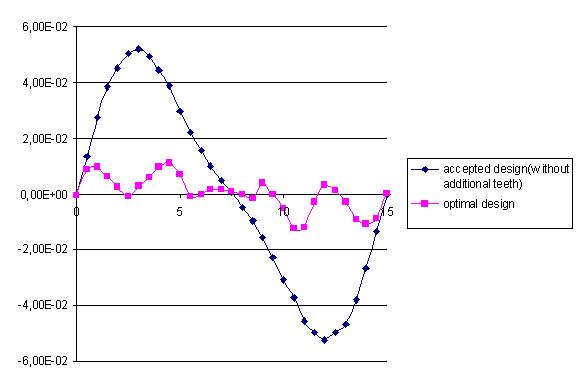
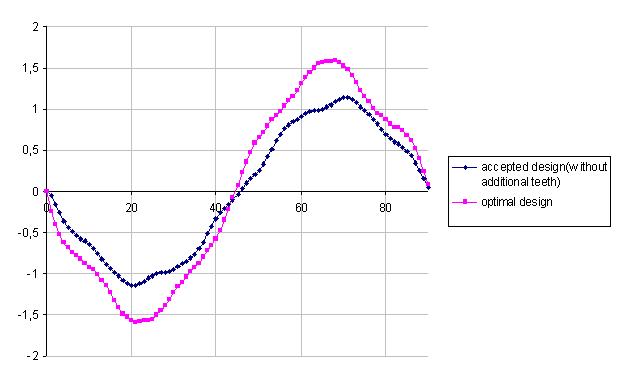
- We can see that: the electromagnetic torque of optimal design higher than the accepted design’s about 23%, but his cogging torque is smaller for 5 times.
- Though the electrical torque of this optimal design is not smooth as in “Nominal Optimization”, but his big maximal value can be useful to manufacture drill or massage instruments etc.
3.Probabilistic and Sensitivity Analyses
Dr. Rimsha V.V., Dr. Radimov I.N., Tran T.T.H.
Odessa University of Technology, Ukraine
-The properties of technical systems are not constant, but they scatter however in reality. It is characterized by a mean value and a stochastic distribution. The causes are manufacturing inaccuracy, process uncertainty, environment influences, abrasion and human factors. These realistic aspects as variability, uncertainty, tolerance and error have to be considered for design of technical systems. A deterministic simulation cannot predict the real system behaviors caused by system variability. Probabilistic analysis must be performed to get the real system information. From input distributions, the output distributions have to be calculated by a probabilistic analysis, which is called tolerance analysis in the design process. The real system behaviors for different conditions can be derivate from these output probability distributions.
-The dependence of electromagnetic torque on stator teeth-arc width, stator added teeth-arc width, pole-arc width and air gap of Brushless motor with permanent magnet (BrLPM) is very complicated. With sensitivity analysis, the system complexity can be reduced and the cause-and-effect chain can be explained:
- Which model parameters contribute the most to output variability?
- Which parameters are insignificant and can be eliminated from the final model?
- Which parameters interact with each other?
-In this part, we analyze the BrLPM (which is found in Nominal Optimization ), parameters which are presented below:
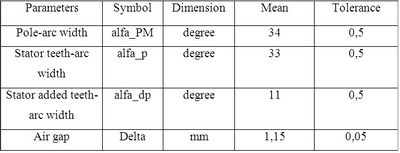
-The electromagnetic torque under load 200A equal 1,29Nm. To maximize electromagnetic torque, we minimize his reciprocal (1/1.29=0.7752).
-We have work-flow:
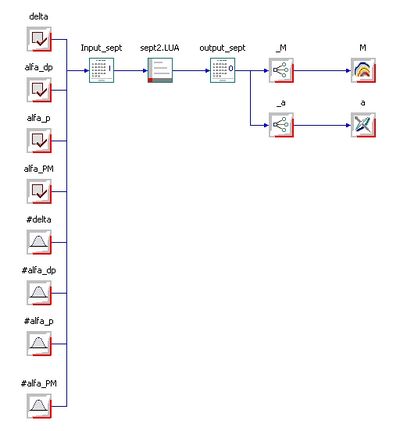
-For probabilistic distributions of input and output we choose the normal distribution. Design of experiment is presented in fig.2
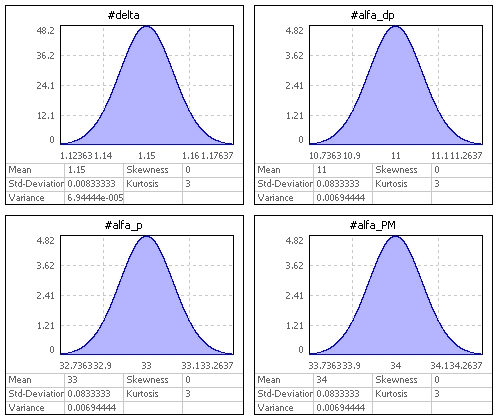
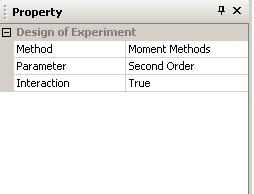
-Through the result of sensitivity analysis (fig.4), we can say: For these tolerances and constant values of inputs, stator teeth-arc width and stator added teeth-arc width have no effect on electromagnetic torque and parameters do not interact with each other (main effect equals total effect).
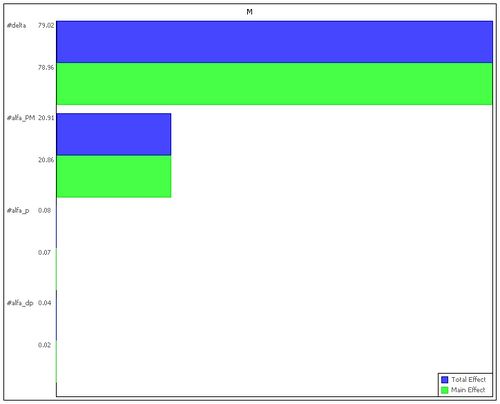
-Result of probabilistic analysis is presented in fig.5.With skewness nearly 0 and kurtosis nearly 3(it means: Mean, Mode and Median are very close), the design model is robust.
